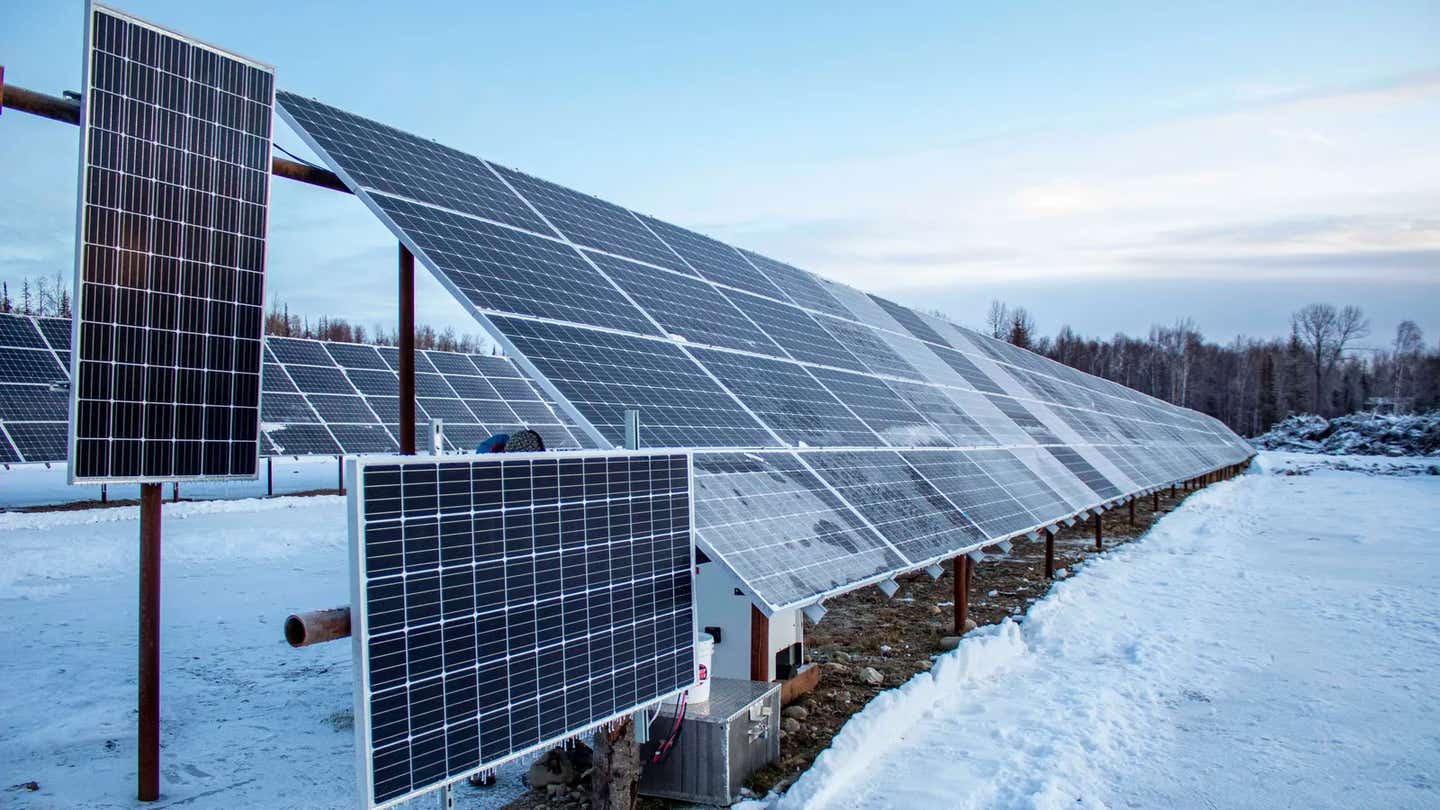Scientists create snow-proof solar panels that can work in all weather
Snow accumulation on solar panels remains a significant roadblock, especially in regions with heavy snowfall.

[Sept. 11, 2023: Staff Writer, The Brighter Side of News]
Snow accumulation on solar panels remains a significant roadblock, especially in regions with heavy snowfall. (CREDIT: Creative Commons)
As the world continues to grapple with climate change, the quest for sustainable energy sources becomes paramount. One of the most sought-after sources? Solar energy. But snow accumulation on solar panels remains a significant roadblock, especially in regions with heavy snowfall.
Now, the solution might just be on the horizon, thanks to the ingenuity of researchers from the University of Toledo (UT).
The Stakes and the Challenge
Every year, sun-blocking snow cover results in a significant 1% to 12% of solar energy losses. In regions with intense and prolonged snowfall, this accumulation could potentially erase power production for an entire month, as noted by Sandia National Laboratories.
To put the impact in perspective, consider this: solar power currently accounts for about 2.8% of U.S. electricity. Even a minor reduction in this percentage due to snow blockage has significant ramifications for renewable energy targets and sustainability goals.
Related Stories
UT’s Game-Changing Solution: Snow-Free Solar
Into this snowy challenge step the UT researchers, who have unveiled an innovative concept named Snow-Free Solar. As detailed in an Energy Department synopsis, this solution involves a durable strip of material attached to the lower edge of solar panels. The purpose? To help these panels effectively shed snow.
While much of the technical details remain proprietary due to the ongoing competition for funding, Hossein Sojoudi, the leader of the research team, commented, “This is something we’ve been working on for a while.” Sojoudi’s YouTube video sheds more light on the Snow-Free solution.
Current methods employed to remove snow from solar panels can be both expensive and potentially harmful to the solar technology. The UT team’s approach simplifies the process with a thin strip of material, roughly the size of a strip of masking tape, placed along a panel’s bottom edge. Crucially, this strip does not hamper the solar power generation process.
Sojoudi’s video illustrates the efficacy of the solution. Two sets of panels — one equipped with the Snow-Free material and another without — are shown side by side. The result? Snow effortlessly slides off the panels armed with the strip, while the control group remains buried under snow.
Business adviser Dan Vining didn't mince his words when he stated in the video, “Our solution is a game-changing technology.”
The American-Made Solar Prize and the Road Ahead
Fueling such innovations is the U.S. Energy Department’s “American-Made Solar Prize” initiative — a multimillion-dollar contest aimed at fostering rapid progress in the solar sector. The initiative has already channeled over $15 million into unique solar ventures since its inception in 2018. Now, the Snow-Free project by UT stands as a finalist, with the potential of securing hundreds of thousands of dollars in funding. The results, eagerly awaited by the UT team, will be unveiled this September.
Every year, sun-blocking snow cover results in a significant 1% to 12% of solar energy losses. (CREDIT: Creative Commons)
This Snow-Free project isn’t UT’s only contribution to the solar sector. Their researchers are in collaboration with the U.S. Air Force, developing flexible photovoltaic energy sheets designed to harness the 37% stronger sunlight available above the Earth's atmosphere.
The Impact on Homeowners and the Solar Market
If successful, Snow-Free Solar could revolutionize the way homeowners in snowy regions view solar energy. The promise of efficient solar panels, unobstructed by snow, is not only an answer to an existing problem but a clarion call to those considering the switch to solar power.
A future without snow-obstructed solar panels could usher in a new era for renewable energy in America, especially in the snow belts. (CREDIT: Creative Commons)
A YouTube viewer from Utah, commenting on Sojoudi’s video, encapsulated this sentiment perfectly, “I am a homeowner in Utah with only 48 total panels … I would be interested in trying.”
A future without snow-obstructed solar panels could usher in a new era for renewable energy in America, especially in the snow belts. It would mean more consistent energy production, higher efficiency, and the unlocking of new regions for solar deployment.
In this race against time to mitigate climate change, every ray of sunlight counts. Thanks to innovations like Snow-Free Solar, we might be one step closer to capturing them all.
For more green news stories check out our Green Impact section at The Brighter Side of News.
Note: Materials provided above by The Brighter Side of News. Content may be edited for style and length.
Like these kind of feel good stories? Get the Brighter Side of News' newsletter.



